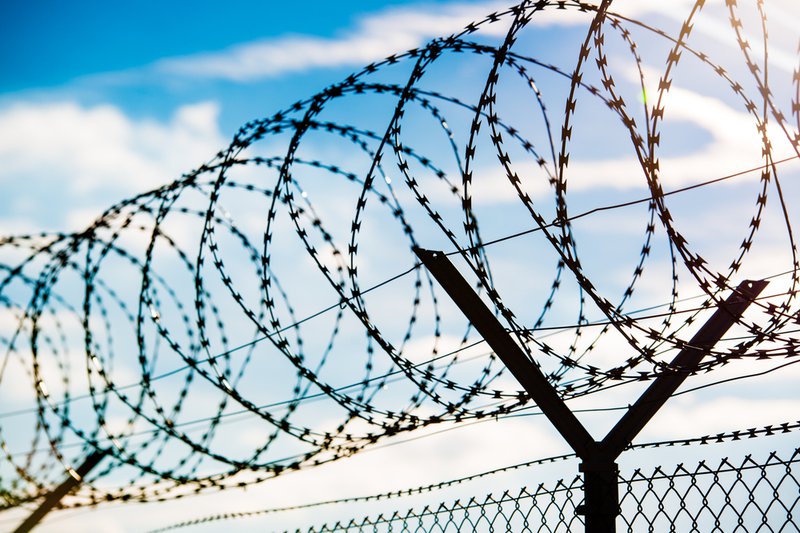Table Of Content

Before installation, conduct a thorough survey of the area to be fenced. Identify boundaries, potential obstacles, and the type of terrain. A well-thought-out plan will streamline the installation process and enhance the effectiveness of the fence. Barbed wire can be either non-electrified or electrified to keep animals inside. Wrap the wires around each other carefully on both ends until they don’t stick out.
Tips for Building a Barbed Wire Fence
The company eliminates excessive texts, improves brand recognition, and adds new content. Its specialists also conduct server configuration, software programming, and security and firewall installation. In addition, they offer PPC management, email marketing, and local SEO services.

How can electric fence integration enhance security?
There are two types of galvanized wire – GBW (Galvanized before Weld or Weave) and GAW (Galvanized after Weld or Weave). This type of wire is treated or coated with a protective and durable coating like zinc. This zinc coating enables the wire to withstand rusting and perishing. It can even maintain its durability during high-level temperatures. Normally, an invisible fence technology uses advanced radio frequencies to function.
Safety when Handling Barbed Wire for Fencing
Leaving Gun Towers and Barbed Wire for a Healing House (Published 2020) - The New York Times
Leaving Gun Towers and Barbed Wire for a Healing House (Published .
Posted: Fri, 07 Aug 2020 07:00:00 GMT [source]
Choose steel posts with at least a 2-inch diameter for a robust fence. If you prefer wooden posts, select a thicker option to ensure stability and sturdiness. Space your fence posts 6 to 8 feet apart for optimal stability and strength. If you’re working with longer sides on your property, you can extend this distance up to 12 to 18 feet, but ensure the posts are buried deeper to accommodate the extra tension.
This will help you to ensure that the fence is installed straight and level. To begin, gather all necessary tools such as stakes, string, tape measure, and/or a can of spray paint. Start by determining the exact location of the fence line on your property. Use a tape measure to mark each corner post's position accurately. Next, drive stakes into the ground at each corner point to establish reference points for your fence line.
If you need to build a barbed wire fence, this article is for you. We’ll go through all the requirements and some recommendations before explaining the procedure, where I’ll focus more on the wiring part. Nex Graphics provides services to clients in Los Angeles and the neighboring areas.
Gates and Access Points:
In high soil-fertility areas where dairy cattle are used in great numbers, 5- or 7-wire fences are common as the main boundary and internal dividing fences. On sheep farms 7-wire fences are common with the second (from bottom) to fifth wire being plain wire. In New Zealand wire fences must provide passage for dogs since they are the main means of controlling and driving animals on farms. Line posts are installed along the span of the fence at intervals of 2.5 to 15 m (8 to 50 ft). The sole function of a line post is not to take up slack but to keep the barbed wire strands spaced equally and off the ground. Brace posts are placed in-line about 2.5 metres (8 ft) from the corner post.
Barbed Wire Fence Pliers
Barbed wire fencing is composed of twisted steel pieces of wires and it is completely different from the woven metal fence. Instead of the strands being intertwined with one another, the strands of a barbed-wire fence are entwined together. Woven wire fences are also widely used for playgrounds, fenced backyards, and other commercial areas. To string a woven metal netting, specifically a chain link fence, a fence stretcher will be needed.
Different Types of Wire Fencing
Hang it on metal strapping hinges from a log that crosses the stream so it can pivot under flood pressure. An attached spring, or a short piece of iron bar (which you’d have to replace after floods), should be enough to keep livestock from pushing the gate open during dry spells. Now, take a sturdy scrap of wood, stick it in the loop, and twist it around and around until the wire’s good and tight.
It can withstand the damages caused by rain and other moisture-related problems. Nowadays, electric wire fences are widely used for agricultural advantages. They are installed to restrict animals like sheep, poultry, or horses. Electric wire fences are generally used to protect high-security areas.

Place them joined together as shown below before pressing with the crimp tool. Optionally, use corner braces to provide extra support to hold up the posts, as shown below. This example uses thick wooden posts at the ends, and thinner metal posts are spaced equally apart.
Often this type of gate is called a portagee fence or a portagee gate in various ranching communities of coastal Central California. After reviewing an aerial map of your property and drawing a blueprint of your intended boundaries, install the posts, then lay out the wire along the inside of the perimeter. Walk to the next corner and, using a wire stretcher (available at most hardware stores), tighten the line, then staple it to the post there. “You want room for the wire to expand and contract.” Repeat with each strand, working from top to bottom.
This ascertains that there will be no parts that are left unprotected and no zinc content would go to waste. Along with the control panel is the cable, which keeps it connected to the digital radio signal built around your residential property. A field of the signal is generated on all sides of the built cable around your property, acting as your pets’ protective borderline. For military or security uses, a lethal amount of electricity might be infused in the wired enclosure.

No comments:
Post a Comment